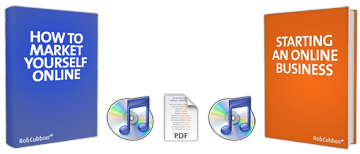The online business landscape seems unrecognisable from only three years ago. You can’t count on anything. For this reason, as business owners, it’s best to have a number of income streams.

Increasing the number of income streams to your business can safeguard you against an unforeseen event. For example, a change in Google’s algorithm can suddenly stop you getting clients. Or an injury like a broken arm could impair your ability to work (as I’m finding out at the moment!)
Passive income can you protect you from the slings and arrows of outrageous fortune. It’s also a lot of fun – believe me, there’s nothing better than waking up to find you’ve earned $100 whilst sleeping.
So here are a few ideas for passive income streams:
Selling vectors and other design resources
Have you ever worked on an illustration or a diagram for a client and felt your work wasn’t appreciated? Well, you don’t have to be paid only once for everything that you do.
Many designers are earning fantastic monthly incomes from their vectors. And they do this via their own sites or third-party sites like Shutterstock or GraphicRiver.
There are many examples of this: read my interview with Steven Snell on how he created Vandelay Premier, a resource site attached to his main blog. And you can listen to my interview with Jon Phillips, the creator of MediaLoot. And Chris Spooner who has an excellent blog at SpoonGraphics, has an Access All Areas membership site where you can download premium resources such as vector files, Photoshop brushes, etc.
Selling WordPress themes
Much like the above, if you can bend WordPress to your will you can sell your own WordPress themes. Here is my interview with Randa Clay who has built DivaThemes selling themes with a distinctly feminine flavour.
Or you could sell them through a third party sites such as ThemeForest.
Selling info-products
This one of the easiest ways of making passive income.
Blogging is a great way of finding clients and promoting yourself online. Once you have established yourself within a niche and gained an audience, you can create e-books and other information products. Through blogging, you will fund out what subject matter of info-product your audience would want.
I have created and sold a couple of a books on this site. The income they have generated (and continue to generate) far outweighs the time investment to create them.
Here’s some further reading on e-books: How to sell digital products with Clickbank and E-junkie and how to create an interactive e-book with InDesign.
However, I think, more money can be made from video products. I was planning to create a membership site for my video products but I decided to put them on Udemy first. This was because I saw the success Tara Roskell was having with her logo course.
I now have three video courses on Udemy and it seems that I will make it at least $1000 a month passive income from them.
Here’s some further reading on Udemy: How I made $1421.20 on Udemy this week and Sell courses online with Udemy.
And another important info-product type is the Amazon Kindle. (It may be incorrect calling Kindle books info-products.) It’s completely different from the e-book and video course model as the unit price is considerably less. However the Amazon marketplace is so huge it cannot be ignored. I will hopefully be publishing my first kindle book within a few weeks. Stay tuned for more on this! Here is some further reading on Kindle from Steve Scott, how to make money with Amazon Kindle books.
You are only limited by your imagination when it comes to info-products. They can be audio, video, the written word, combinations thereof, or anything you want.
Graphic designers are in a great place for selling info-products. We can sell them to our client markets as well as to other graphic designers wanting to learn the trade.
Selling software as a service
Software as a service (SaaS) is potentially a better business model than info-products. Online software, web apps or smartphone apps provide a solution to a problem. All you have to do is find a problem or “pain point” within a certain niche or industry.
You’ll then have to create the solution. This will involve deciding on the best platform, programming language and way to create the software and then hiring a developer to create it. This is, by no means, easy or cheap. Try Elance or oDesk for freelance developers. As a graphic designer you will, of course, save money on design.
For further reading on SaaS there are two excellent interviews with Dane Maxwell, one by Pat Flynn, Building a Lucrative Business with No Ideas, No Expertise & No Money and another by Meron Bareket, How To Create a 6 Figure Business With No Risk And No Idea.
I will be launching my first SaaS product very soon.
Affiliate links
Again this needs to be done on the back of a blog. There are many affiliate opportunities for graphic designers – and web designers especially. Hosting, WordPress premium plug-ins, WordPress premium themes are the sort of products that designers can promote.
Have a look at my passive income reports to see how I’ve done with this:
H1 2012
Q3 2012
Q4 2012
Q1 2013
Q2 2013
Q3 2013
Advertising
You won’t be buying your villa in the south of France with this one. I’d be lucky if I make $100 a month through AdSense on this site and advertising on YouTube. And, if you can’t use AdSense for whatever reason, the other platforms pay even less.
I could make more money from it but I hate to see adverts prominently on portfolio websites.
You can do it
You can use your skills as a graphic designer to create products and passive income. Start as quickly as you can. Think of a product you can make quickly and easily. Put it out there. See what happens. The best way to learn how to earn passive income is to just do it.

Hi,
Thanks for Saas idea.
regards
vinodh
SaaS is going to be the biggest thing on the Internet, I think. 🙂 Thanks, Vinodh.
Thanks Rob!!
Good ideas like always………
Best of luck with the arm mate:)
Regards,
Thank you Jacus. As breaks go it really is not that bad!
Nice, particularly I like the Randa Clay way. But, right now I have nothing to sell, only my own labour. And only sometimes 🙂
The more you keep designing, or keep working, the more you will eventually have to sell. Thank you, Oksana.
Heck, Rob I can’t keep up. A broken arm and a Kindle book out. Impressive.
I noticed one of Dane Maxwell’s supported SaaS businesses appears to be dead already – idrumbeat.com. That’s bound to shake the confidence of this humble and modest guy 😉
Haha, David. The broken arm perversely helped me write the Kindle book. I got into using dictation software and there wasn’t much else I could do.
Graphic designing is one thing that can make you passive income with every passing month. If you are good at designing, you can start your very own designing firm dealing with logo designs, banners, flyers etc. and there won’t be anything to stop you from getting new clients.
I have known many people start out as just small designers and went on to become one of the best in their fields. 🙂
Thanks, Arbaz, designing logos, banners, flyers, etc., is, of course, active income not passive! 🙂
Selling stock graphics is one awesome way to do passive income! I look to exploring more of this income as I currently contribute with both graphic river and istock. Having your items approved is the key here, but keep revising or whatever is required, because there’s nothing like logging in to see that your items have been downloaded many times over, and for some pretty good scratch. Being ‘Exclusive’ or earning more money per download will be tempting, but I suggest staying the ‘Non-Exclusive’ course so you can place the same items in multiple marketplaces for more earning potential.
Hello Dion, selling stock graphics is the one thing of the above that I haven’t really tried. I’m really interested in your work in this area. I will follow you and look forward to learning from you. Thank you on your advice on the exclusivity issue.